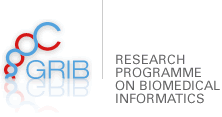
01/2024
Animal experimentation in toxicology for the 21st century: needed or outdated?
In this opinion article, Karolina Kopańska, a PhD student in computational toxicology, tells us about her views on chemical risk assessment with new approach methodologies (NAMs) that avoid the use of animals.
EL·LIPSE PRESS RELEASE 29/11/2023
A time of changing values
Animal experimentation in toxicology for the 21st century: still highly necessary or rather outdated? This question is very complex for various reasons. On the one hand, we live in an era of rapid changes, where technology continues to reshape every aspect of our lives. The 21st century is all about innovation, digital transformation, and exponential growth of knowledge. On the other hand, however, awareness about ethics and sustainability has drastically risen among the scientific community. In that sense, the scientific values have shifted from self-protection (of humans) to the need to protect humans together with all other beings and the environment.
These, together with many other reasons, have made people slow down to take a snapshot of the current practices applied in toxicology to reevaluate their assets and drawbacks. But, as this topic is very complex, mixing ethical, political, and scientific arguments, there are differences between how people address it and what they perceive as the most critical.
The beginning of my journey
Personally, during the last years I've encounter a few opportunities that have allowed me to dive into this topic from different angles. The journey started already during the master's and continued throughout the PhD, during which I worked on two large-scale projects involving the collaboration of several partners from the industry, academia, and regulatory sector.
The eTRANSAFE project aimed at enhancing translational safety assessments of drugs through integrative data management (it was a continuation of the eTOX project to create a toxicology database that our group had already been involved in). I was very lucky to support a task focussing on the development of computational methods aiming to improve the reliability of preclinical to clinical translation of safety data. During this task, we also uncovered the main obstacles associated with translational analyses, which made me realise how complex translational science actually is.
Since last year, I've worked on the RISK-HUNT3R project whose vision is to change the current chemical risk assessment paradigm. In general terms, a chemical risk assessment is a multi-stage process focussing on the evaluation of the safety of substances (e.g., industrial checmicals, cosmetic ingredients, pesticides), considering their chemical properties, exposure scenarios and the associated hazards. For decades, such assessments involved animal studies, based on which the risk was estimated and managed. The aim of the RISK-HUNT3R consortium is to move away from these standard in vivo practices and develop new frameworks, based on the integration of new approach methodologies (NAMs), that support this next generation risk assessment.
The term "NAMs" encompasses a variety of in vitro or in chemico test systems, in silico modelling tools, knowledge bases and other innovative methods. Good examples are the organ-on-a-chip technologies or in silico transcriptome mapper systems. NAMs are considered ethically sourced methods that yield mechanistic data of direct human-relevance, thereby promoting the 3Rs (replace, reduce, refine) of animal experimentation - which is why their application to test specific risk assessment hypotheses is becoming more and more desired by toxicologists and the public. I have been involved in two large-scale projects aiming to improve safety assessments practices.
My tasks in this project concentrate around data integration and uncertainty assessment, both of which pose a significant challenge to both scientists and regulators. Regarding the latter, the aim is to analyse the impact of epistemic (lack of knowledge about some biological property) and aleatory (natural variability observed in biological systems) factors on risk estimates. As an early-stage professional in the field of toxicology, I'm extremely lucky to participate in such enriching collaborations, learn from experts, and watch them constantly come up with new ideas. These interactions also helped me strengthen my knowledge and scientific opinion on several related topics which I'm re-using to link toxicology, safety assessments, and uncertainty within my doctoral thesis.
Summer school: an opportunity and an eye opener
In May 2023, I got to participate in the "JRC Summer School on non-animal approaches in science: towards sustainable innovation". In addition to this fantastic opportunity, I had the privilege of being granted the travel award by the PETA Science Consortium International, a non-profit organisation which promotes robust non-animal testing methods that protect human health and the environment.
The JRC (European Commission's Joint Research Centre) is located in Ispra, Italy, surrounded by beautiful lakes and mountains. The meeting's agenda was built around different aspects on non-animal approaches, connecting ethics with the technological state-of-the-art. The regulatory aspect of using non-animal methods was touched upon in many sessions. These were followed by "world café" breaks, during which a safe space was created for the participants to engage in more detailed conversations with the speakers. The meeting was concluded with a tour through the highly impressive laboratory establishments of the EU Reference Laboratory for alternatives to animal testing (EURL ECVAM).

Safety always comes first
The first most important lesson I have learned during the time working in toxicology is that safety always comes first. This means that the most appropriate method to produce human-relevant results should always be selected to take suitable safety measures. Sometimes, this can be a combination of in vitro and in silico methods merged with the already existing data about the endpoint of interest (the endpoint is the measurable toxicological effect following the exposure to a chemical). A good example for such endpoints assessed exclusively using alternatives to animal testing are skin sensitization and eye irritation.The most appropriate method to produce human-relevant results should always be selected to take suitable safety measures.
However, in the case of more complex endpoints involving systemic toxicity, the full replacement of animal experiments is not yet possible, mainly because the currently available NAMs do not cover the full biological space of such endpoint.
A lot of work is currently ongoing to develop such methods in order to comply with the 3Rs to the maximum extent possible. In that sense, animal experimentation remains still necessary, albeit with the potential to be partly or even completely replaced in the future.
Ethics in toxicological testing
The second important lesson was the interpretation of "ethics" in the context of toxicological testing. While the intuitive assumption is that ethics means the withdrawal of animal suffering, it is not necessarily the only interpretation. On the other side of the coin, ethics also means applying methods that best represent human biology. This ethical perspective implies accepting the fact that, although animal systems have proven highly effective in protecting human safety, they may not always perfectly represent every detail of human biology. There are many reasons for the incomplete representation, including the well-known inter-species variability, but also the limitations in analysing the underlying mechanisms of toxicity when using animal subjects or the differences in the design of animal and human studies.
Additionally, animal studies are extremely resource and time consuming, being a potential reason for a delay in the approval or registration of important medicines or chemicals, respectively.
Combining these two views, animal experimentation should be refined, reduced or replaced, wherever possible, in order to protect intact animals from suffering and to generate the most relevant results for human-centred risk management - with the caveat that for some studies, animal models cannot yet be avoided.
To summarise, both ethics and sustainability are key values that should be present in each scientific analysis. I am very grateful for being part of the toxicological community and can't wait for future challenges that I will face as a scientist in the field of alternatives to animal testing.



